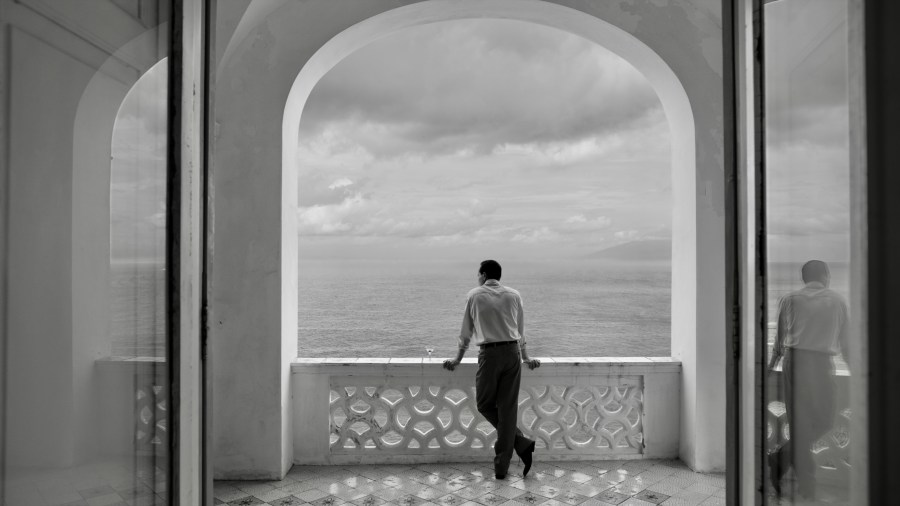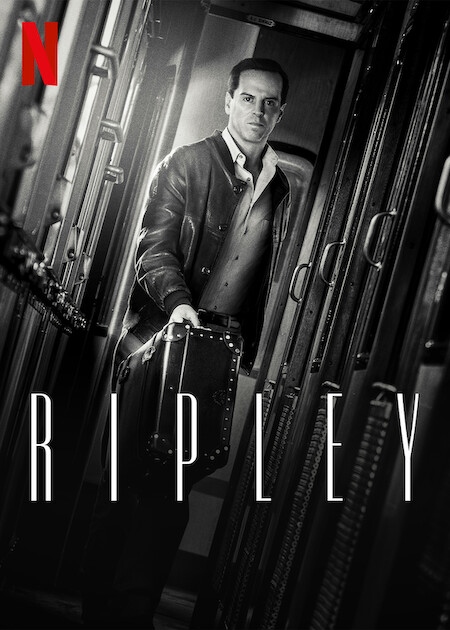(NEXSTAR) — It’s been 69 years since Tom Ripley, Patricia Highsmith’s famed psychopathic con artist, made his debut in the first of Highsmith’s crime novels centered on the character. In that time, Ripley’s been adapted for radio and for both the small and silver screens — becoming a beloved literary figure in spite of his misdeeds.
Now, a new generation is preparing to meet the talented Mr. Ripley, as Netflix’s eight-episode limited series “Ripley” hits streaming April 4.
Here’s what to know about “Ripley.”
The latest iteration of glamorous grifter Ripley is the brainchild of Oscar-winning director and writer Steven Zaillian (“Schindler’s List,” HBO’s “The Night Of”), who began working on the project (originally intended for Showtime) in 2019.
Though Ripley has appeared in several film adaptations, Netflix’s series marks the character’s first proper TV outing. Of the decision to create a show rather than another film, Zaillian previously told Vanity Fair that the space of several episodes “allowed me to be more faithful to the story, tone, and subtleties of Highsmith’s work.”
Indeed, viewers may be surprised at how poised and lingering “Ripley”‘s pacing is. Though it comes from the populist world of Netflix, the series operates more like a long film split into parts. In one particularly extended sequence of the third episode, Ripley (Andrew Scott, “All Of Us Strangers,” “Fleabag”) unsuccessfully tries sinking a motor boat without anyone seeing. Rather than cutting to a montage, Zaillian forces viewers to feel Tom’s anxiety as he tries, and fails, to destroy (spoiler) evidence.
This scene, and others, are gorgeously lived in by star Scott, who imbues his Tom Ripley with quiet longing and delicate fragility — both of which make the amoral turns the character takes all the more unnerving.
In case you’re unfamiliar with the basic premise of the story, “Ripley,” based on Highsmith’s “The Talented Mr. Ripley,” follows New Yorker Tom Ripley — a bespectacled loner supporting himself through petty mail and phone scams in the early 1960s — who’s given an odd business proposition: shipping magnate Herbert Greenleaf will pay him to travel to Italy to convince his fun-loving son Dickie to return to the states to help with the family business.
Ripley, who is vaguely aware of Dickie, travels to the coastal Italian paradise of Atrani (changed from the fictional “Mongibello” of the source material), and infiltrates Dickie’s world under the guise of being an old school friend who Dickie can’t seem to remember.
In Dickie (Johnny Flynn, “One Life”), Ripley discovers everything he wants and wants to be.
The success or failure of any Ripley adaptation — at least of the first novel — largely falls on the ability of the actor behind Dickie to make the audience fall in love with him. It’s a feat Jude Law aced in Anthony Minghella’s 1999 adaptation that shares a name with Highsmith’s novel. In that version of Dickie, Dickie dazzles everyone he meets with his unnatural beauty, charm and intensity. Tom is especially enamored and what follows is the fallout of this obsession and desire.
But Law’s Dickie has a dark side, too. And Law is electric in moments when the tanned, toned and perfectly coiffed American socialite breaks the sunny demeanor and is overtaken by an alluring menace. Flynn’s Dickie is much different — and that’s a good thing.

In place of Law’s frenetic charisma, Flynn’s Dickie is more reserved and mysterious. Unlike Law’s Dickie, Flynn’s Greenleaf is brooding and dark and much less in love with life. Instead, Dickie is kind of bored with everything and resigned to life as a spoiled rich kid with little to offer the world. These changes in Dickie are also reflected in a different relationship between Tom and Dickie than in Minghella’s brilliant Matt Damon-starring 1999 film.
Unlike in Minghella’s film, Tom and Dickie don’t become quick and brief best friends forever. Flynn’s Dickie never seems convinced about Tom. Through the series’ first few episodes, Dickie appears to be weighing whether or not he even likes Tom. To Dickie, Tom is enjoyable enough to keep around — until he’s not.
Another interesting part of this dynamic is that Scott and Flynn’s Tom and Dickie actually seem well-suited to be friends. Rather than a complete opposites, Dickie is kind of a “yassified” Tom. In Dickie, Tom finds who he could be if things were only a little bit more different. If he were a little bit more different.
But as Tom angles to solidify himself in Dickie’s world, class status and the presence of Dickie’s girlfriend, writer Marge Sherwood (Dakota Fanning) keep getting in his way. As Marge, Fanning also bucks the idea of a character we’ve seen on film before. Whereas the Marge portrayed by Gwyneth Paltrow in “The Talented Mr. Ripley” is (initially, at least) warm and inviting, Fanning’s Marge is immediately skeptical of Ripley.
Fanning’s Marge assesses Tom with crossed arms, as if waiting for him to prove her wrong (or right). Like Flynn, Fanning expertly embodies the idea of a class of people given everything, wanting for nothing and having little joy about it.

As is the case in the source material, Marge is kind of the smartest character in the story, since as Tom’s plans begin to fray and everyone believes his version of events, she’s the only one with inklings of the truth. She’s aided by Dickie’s arrogant friend Freddie Miles (Eliot Sumner) and some pesky law enforcement officials to expose Tom.
But can they?
All eight episodes, labeled as chapters, are written and directed by Zaillian, who also made the interesting choice to present the series in black and white.
“The edition of the Ripley book I had on my desk had an evocative black-and-white photograph on the cover,” Zaillian told Vanity Fair. “As I was writing, I held that image in my mind. Black and white fits this story — and it’s gorgeous.”
At first glance, “Ripley”‘s black and white aesthetic might seem overindulgent and unnecessary but as the series progresses, the deep creamy white and foreboding black amplify the tension and frame people in an almost ghostly veneer — true to Zaillian’s word, the B&W is additive and works so, so well.

As far as complaints go, some viewers might feel rushed through the relationships, particularly the Tom-Dickie dynamic. Anyone familiar with Minghella’s movie might expect to spend more time with the two as their friendship develops. In “Ripley,” however, it feels as if we’ve barely gotten to know Dickie before he’s gone.
All-in-all, “Ripley” is a gorgeously executed reinvention of a contemporary classic. Anyone familiar with previous Ripley adaptations, including French director René Clément’s beloved 1960 film “Purple Noon,” will be at least intrigued by the changes made to the characters and tone. Zaillian’s small-screen adaptation packs enough big-screen elegance and craftwork that viewers too, may get a little caught up in the drama.
All episodes of “Ripley” will be available on Netflix on Thursday.
SCORE: ★★★★★

































